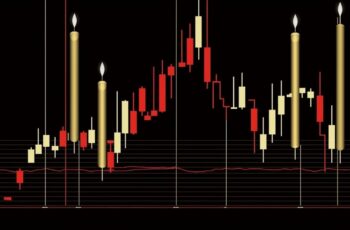In the vast cosmos of investing, stars guide the way, not just in the sky but on our charts too. Enter the Morning Star Rule, a beacon for those navigating the tumultuous seas of the financial markets. At its essence, this is not just another technical analysis tool, but a visual manifestation of hope for traders—a sign that the dawn of a bullish trend may be on the horizon. Originating from the ancient practices of Japanese candlestick charting, the Morning Star Rule holds a significant place in the toolkit of the modern investor. Why, you ask? Because understanding market trends and predicting potential turnarounds is crucial for strategic investment. As we delve deeper, you’ll discover the power of this three-candle pattern and how it can illuminate profitable pathways in your investment journey. So, let’s set sail and follow the star!
The Basics of the Morning Star Rule
What is the Morning Star Rule?
In the realm of technical analysis, the Morning Star Rule stands out as a powerful candlestick pattern that traders often rely on. At its core, the Morning Star Rule is a three-candle pattern that signals a potential bullish reversal after a downtrend. Here’s how it breaks down:
- The first candle is a long bearish (usually red) candle, indicating a continuation of the existing downtrend.
- The second candle is a small-bodied candle—either bearish or bullish—that represents indecision in the market. This candle typically gaps below the first candle, emphasizing the prevailing bearish sentiment.
- The third candle is a long bullish (usually green) candle that closes well into the body of the first candle, indicating a strong buying momentum and a possible reversal to a bullish trend.
The brilliance of the Morning Star Rule lies in its simplicity yet profound implication: the bulls are taking control. For investors and traders, spotting this pattern can be a clarion call to action, suggesting that it might be time to consider buying or at least, to anticipate a potential uptick in prices.
Historical Background
Tracing back the roots of the Morning Star pattern, we journey to 17th century Japan. Candlestick charting, the birthplace of the Morning Star, wasn’t originally developed for stocks but for something far more essential to the Japanese economy—rice. Japanese rice traders, with their meticulous record-keeping habits, began noting price movements in a visual format. Over time, these charts became an indispensable tool for predicting price directions, long before the West adopted similar techniques.
The name “Morning Star” carries poetic significance. Just as the morning star (often referred to as Venus) heralds the dawn, signaling the end of darkness and the beginning of a new day, the Morning Star candlestick pattern indicates the end of a bearish trend and the dawn of a bullish one.
As global trade expanded and financial markets evolved, these patterns transcended cultural and geographical boundaries. Today, the legacy of those Japanese rice traders lives on, with modern traders across the globe leveraging the wisdom of the Morning Star pattern to inform their decisions.
Implementing the Morning Star Rule in Investment Strategies
When and How to Use the Morning Star Rule
Investing, in many ways, is akin to navigating a ship through turbulent waters. The Morning Star Rule acts as a lighthouse, signaling safer territories ahead. But recognizing the signal is just the first step; understanding when and how to act on it is crucial for success.
- Spotting the Trend: Before the Morning Star can come into play, there must be a prevailing downtrend in the market. Only in this context does the appearance of the Morning Star hold significance as a potential bullish reversal signal.
- Volume Analysis: While the Morning Star pattern itself is a strong indicator, pairing it with volume analysis can offer more robust confirmation. A surge in trading volume on the third candle (bullish) reinforces the idea of an incoming bullish trend.
- Complementary Indicators: It’s advisable to use the Morning Star Rule in conjunction with other technical signals. For instance, if the pattern forms near a known support level or coincides with a bullish moving average crossover, it can enhance the validity of the potential bullish reversal.
Example: Consider a trader monitoring stock ‘XYZ.’ They notice a protracted downtrend, but on a particular day, a Morning Star pattern emerges. The next day’s trading volume is significantly higher, and the stock price starts an upward trajectory. The pattern, combined with other indicators, prompts the trader to buy, benefiting from the ensuing bullish trend.
Common Mistakes and How to Avoid Them
As with all tools in the world of investment, the Morning Star Rule isn’t foolproof. Recognizing potential pitfalls is vital for making informed decisions.
- Misinterpreting Similar Patterns: Not every three-candle pattern spells a Morning Star. Traders must be wary of patterns that look similar but don’t meet all criteria. For example, without the gap between the first and the second candle, the signal’s strength diminishes.
- Neglecting Broader Market Conditions: While the Morning Star indicates a potential reversal, broader market conditions might affect the outcome. For instance, macroeconomic factors, company news, or major global events can override technical patterns.
- Over-reliance on a Single Indicator: The Morning Star Rule is a powerful tool, but it shouldn’t be the sole basis for trading decisions. Combining it with other technical and fundamental analyses creates a more holistic trading strategy.
Case Study: A trader once spotted a perfect Morning Star pattern on stock ‘ABC’ and decided to invest heavily. However, they failed to consider an impending negative quarterly report for the company. The stock did rise briefly after the pattern, but plummeted after the earnings release, resulting in a loss. This scenario underscores the importance of comprehensive market analysis.
Conclusion
The Morning Star Rule stands as a stellar testament to the age-old practices of candlestick charting, intricately weaving past wisdom with modern trading strategies. A beacon in the vast expanse of investment tools, this three-candle pattern is more than just a visual cue; it’s a narrative of market sentiment, telling tales of battles between bears and bulls. From its historical roots with Japanese rice traders to its vital role in contemporary technical analysis, the Morning Star illuminates potential bullish reversals amidst prevailing downtrends. But, as with all tools, its efficacy lies in its judicious application—understanding its nuances, contextualizing it within broader market trends, and synergizing it with other investment strategies.
To all investors, whether you’re taking your first step or have treaded countless market paths: let the Morning Star guide you, but never let it blind you to the vast universe of investment wisdom.
FAQs
Certainly, the Morning Star Rule finds its origins in Japanese rice trading, but its adaptability is a testament to its relevance. Today, this rule can be applied to various financial markets including stocks, commodities, forex, and even cryptocurrencies. However, as with all investment techniques, the rule’s effectiveness may vary based on market volatility and other factors specific to each market type.
The Morning Star Rule is a respected and often-utilized tool in technical analysis. Its reliability stems from its depiction of market sentiment. However, no single trading strategy or pattern can claim absolute reliability. The Morning Star Rule, while powerful, is most effective when combined with other market analysis tools and fundamental research.
Absolutely! The Morning Star Rule is quite visual, making it easier for beginners to identify. But, as with all trading strategies, understanding its nuances and underlying market psychology is key. Beginners are encouraged to practice on demo accounts and study past market charts to familiarize themselves with the pattern before applying it in real-time trading.
The beauty of the Morning Star Rule lies in its complementary nature. While it provides a potential bullish reversal signal, it becomes even more potent when aligned with other indicators like volume analysis, moving averages, or support/resistance levels. By integrating the Morning Star with other strategies, investors can craft a more holistic and informed trading plan.




